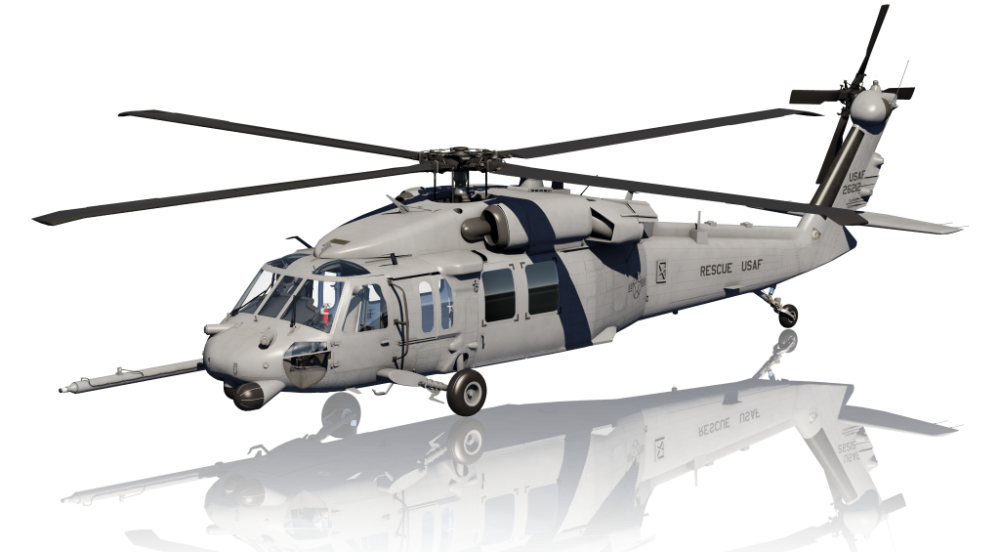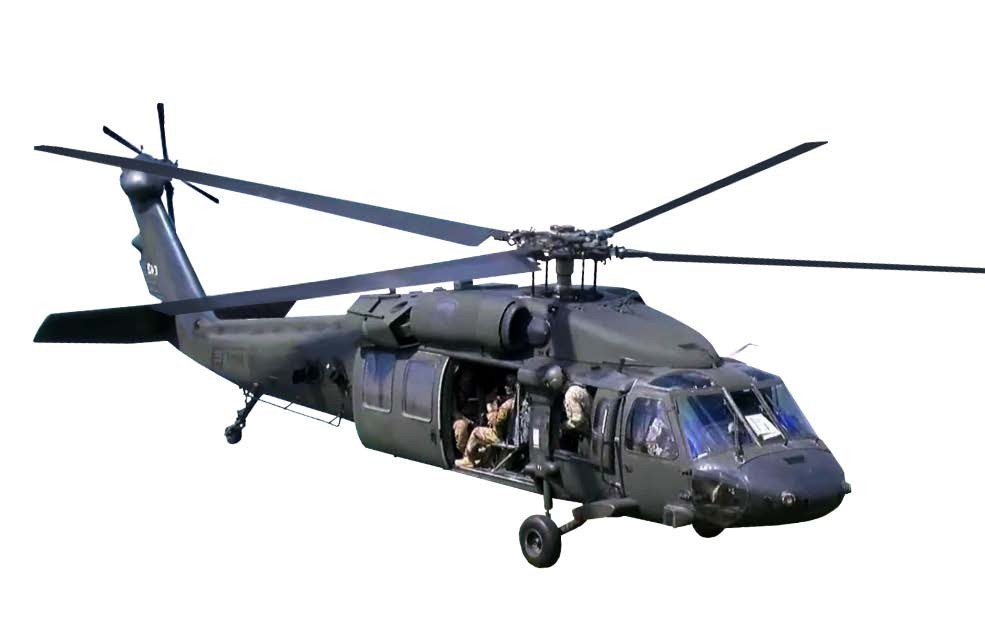UH-60 Blackhawk: A Vital Tool for Armed Force Transport and Rescue Procedures
UH-60 Blackhawk: A Vital Tool for Armed Force Transport and Rescue Procedures
Blog Article
Find Out About the Flexibility of the UH-60 Blackhawk
The UH-60 Blackhawk is a remarkable instance of contemporary armed forces design, embodying versatility throughout a large selection of functional contexts. From troop transportation to medical emptying and reconnaissance goals, its style suits numerous duties while stressing quick implementation and versatility. The sophisticated avionics and robust capabilities of the Blackhawk not just boost its operational effectiveness in challenging atmospheres but likewise extend its energy in humanitarian efforts. Comprehending its multifaceted applications motivates a more detailed exam of how this helicopter proceeds to progress and influence noncombatant and army procedures alike.
History of the UH-60 Blackhawk
The UH-60 Blackhawk, a flexible energy helicopter, was developed in the late 1970s by Sikorsky Airplane to fulfill the U.S. Army's need for a contemporary tactical transportation helicopter. This initiative arose in action to the restrictions observed in the previous generation of helicopters throughout the Vietnam War. The united state Army sought an aircraft that can execute a variety of missions, consisting of troop transportation, clinical discharge, and logistical support, while likewise showing boosted survivability and efficiency.
The Blackhawk was made with advanced innovation and engineering, featuring a twin-engine configuration, a four-bladed blades system, and a durable airframe. Its initial trip took place in 1974, and it was formally introduced right into solution in 1979, promptly coming to be a critical possession for the united state military. The helicopter's flexibility permitted it to be used in different battle and altruistic procedures, showcasing its efficiency in varied settings and objectives.
Over the years, the UH-60 has actually gone through constant upgrades and alterations, ensuring its importance in contemporary warfare. Its legacy has strengthened its standing as a keystone of army air travel, mirroring a commitment to technology and operational excellence.
Key Functions and Specifications
Often lauded for its design prowess, the UH-60 Blackhawk flaunts a variety of vital functions and specs that improve its operational capacities. This functional helicopter is powered by 2 General Electric T700-GE-701C engines, each with the ability of producing 1,800 shaft horse power, enabling it to attain an optimum cruise ship rate of around 150 knots.
The aircraft's unique layout consists of a four-blade primary blades system and a four-blade tail blades, adding to remarkable maneuverability and security. With a maximum launch weight of 22,000 pounds, the UH-60 can carry approximately 11 soldiers or equal cargo. Its sophisticated avionics collection supplies enhanced situational recognition and navigating, necessary for different mission profiles.
The Blackhawk includes a durable airframe created from sophisticated composite materials, supplying increased toughness and resistance to tiny arms fire. UH-60 Blackhawk. Additionally, the helicopter is furnished with an electronic fly-by-wire control system, enhancing responsiveness and minimizing pilot workload. With a range of about 600 nautical miles and the capacity to run in diverse environments, the UH-60 Blackhawk continues to be a vital property in modern military procedures
Military Applications
With its innovative attributes and requirements, the UH-60 Blackhawk has actually ended up being a foundation of army procedures throughout the globe. Created for adaptability, it satisfies a vast selection of functions varying from army transportation to clinical evacuation. The helicopter's capability to operate in diverse settings-- whether in combat areas or difficult terrains-- guarantees it continues to be an indispensable asset for contemporary army pressures.
The UH-60's robust layout enables for the transport of as much as 11 troops, sustaining fast implementation during crucial goals. Its advanced avionics and navigating systems enhance situational understanding, making it possible for pilots to perform intricate operations also in adverse weather conditions. The helicopter is furnished with defensive systems to protect against dangers, guaranteeing the safety and security of personnel onboard.

Humanitarian Objectives

Altruistic objectives commonly depend on the UH-60 Blackhawk for its unmatched versatility and rapid reaction capabilities. This multi-role helicopter has verified vital in different situations, consisting of calamity alleviation, clinical discharges, and logistics support in remote or inaccessible locations - UH-60 Blackhawk. Its capacity to deliver products and personnel promptly permits for timely interventions during crises, dramatically improving the performance of altruistic operations
The Blackhawk's sophisticated avionics and robust layout enable it to operate in difficult settings, such as unfavorable climate condition or rugged terrains. Furnished with hoisting systems and clinical emptying capacities, the helicopter can get damaged individuals from hard-to-reach locations, making sure timely clinical attention. In addition, its capacity to quickly deploy aid products, consisting of food, water, and crucial tools, makes it an essential asset in large-scale alleviation initiatives.
Additionally, the UH-60 Blackhawk's versatility allows for different arrangements tailored to particular goal requirements, whether it entails transporting emergency responders or providing vital resources to damaged populaces. my explanation Its functional history in altruistic objectives underscores the aircraft's crucial duty in saving lives and reducing suffering throughout humanitarian crises and natural disasters, showcasing its sustaining commitment to supporting worldwide relief initiatives.
Future of the Blackhawk
The future of the UH-60 Blackhawk shows up encouraging as developments in modern technology and evolving goal requirements shape its ongoing importance in civilian and army procedures. As armed forces around the globe look for to improve their fleets, the Blackhawk is undertaking upgrades that improve its abilities, including improved avionics, advanced interaction systems, and boosted haul capabilities.
The integration of unmanned systems and expert system is poised to reinvent procedures. Future variants may incorporate self-governing flight capabilities, enabling raised functional adaptability and lowered threat to workers throughout high-threat goals. Furthermore, hybrid-electric propulsion systems are being checked out to boost fuel efficiency and lower the environmental impact of military procedures.
International partnerships and export possibilities are additionally increasing the Blackhawk's international impact. As nations buy modernizing their air wheelchair abilities, the Blackhawk's versatility makes it a favorable check my blog selection for various duties, from army transport to medical evacuation and search-and-rescue operations.
Final Thought
The UH-60 Blackhawk exhibits versatility in armed forces air travel, successfully satisfying roles varying from army transport to medical discharge and reconnaissance. As functional demands progress, the continued advancement and assimilation of the Blackhawk will certainly guarantee its importance and efficiency in resolving future challenges in both military and civilian contexts.

With view its advanced attributes and specifications, the UH-60 Blackhawk has ended up being a foundation of armed forces procedures throughout the globe. As armed forces approaches evolve, the UH-60 Blackhawk proceeds to play a vital function in improving functional efficiency and making sure objective success throughout the theaters of engagement.
Altruistic missions usually rely on the UH-60 Blackhawk for its exceptional adaptability and rapid action abilities. UH-60 Blackhawk.The UH-60 Blackhawk exhibits flexibility in army aeronautics, properly meeting duties varying from army transportation to medical discharge and reconnaissance
Report this page